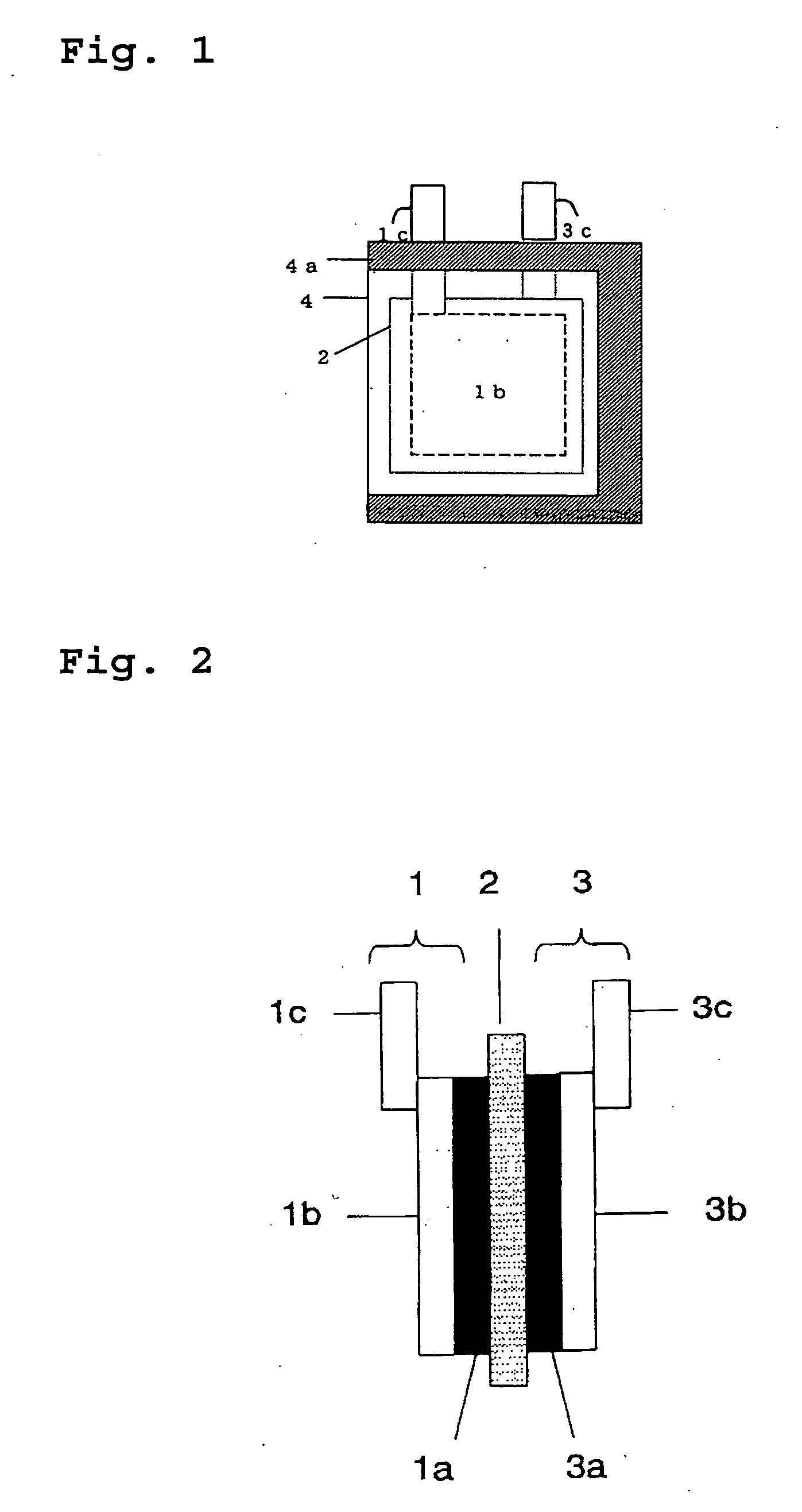Lithium secondary battery
- Summary
- Abstract
- Description
- Claims
- Application Information
AI Technical Summary
Benefits of technology
Problems solved by technology
Method used
Image
Examples
example 1
Preparation of Negative Electrode
[0026] Using a copper foil on one side of which is formed irregularities (thickness=20 μm, arithmetical mean roughness Ra of the irregular surface=0.2 μm) as a current collector, a silicon thin film was formed on the irregular surface of the current collector by RF sputtering. The conditions of the sputtering were as follows; sputtering (Ar) flow rate=100 sccm, substrate temperature=room temperature (not heated), reaction pressure=1.0×10−3 Torr, and high-frequency power=200 W. The silicon thin film was deposited until its thickness became 5 μm. This silicon thin film was confirmed to be amorphous by XRD.
[0027] In the manner described above, an electrode having a size of 2 cm×2 cm was prepared. The discharge capacity per unit area of this electrode was 3.93 mAh / cm2.
[0028] Preparation of Positive Electrode
[0029] A slurry was prepared by mixing NMP (N-methyl-2-pyrrolidone) with 85 parts by weight of LiCoO2 powder as a positive electrode active mate...
example 2
[0034] An electrode was prepared in the same manner as in Example 1 except that the thickness of the silicon thin film was 6.7 μm. The discharge capacity per unit area of this electrode was 5.26 mAh / cm2. Using this electrode as a negative electrode, a lithium secondary battery was fabricated in the same manner as in Example 1.
example 3
[0035] An electrode was prepared in the same manner as in Example 1 except that the thickness of the silicon thin film was 10 μm. The discharge capacity per unit area of this electrode was 7.86 mAh / cm2. Using this electrode as a negative electrode, a lithium secondary battery was fabricated in the same manner as in Example 1.
PUM
 Login to View More
Login to View More Abstract
Description
Claims
Application Information
 Login to View More
Login to View More - R&D
- Intellectual Property
- Life Sciences
- Materials
- Tech Scout
- Unparalleled Data Quality
- Higher Quality Content
- 60% Fewer Hallucinations
Browse by: Latest US Patents, China's latest patents, Technical Efficacy Thesaurus, Application Domain, Technology Topic, Popular Technical Reports.
© 2025 PatSnap. All rights reserved.Legal|Privacy policy|Modern Slavery Act Transparency Statement|Sitemap|About US| Contact US: help@patsnap.com


